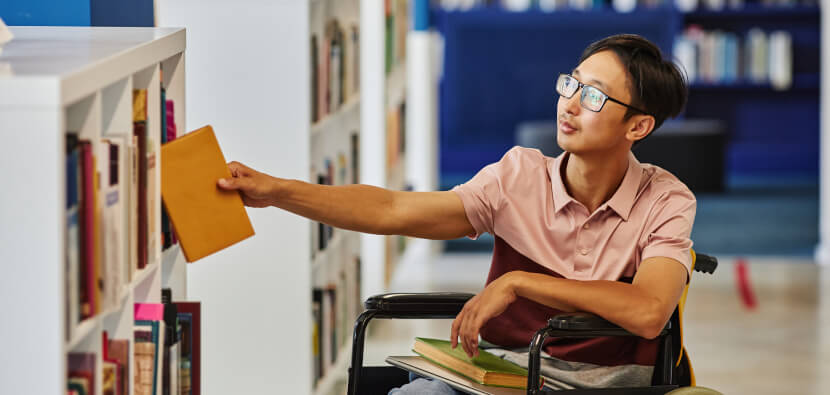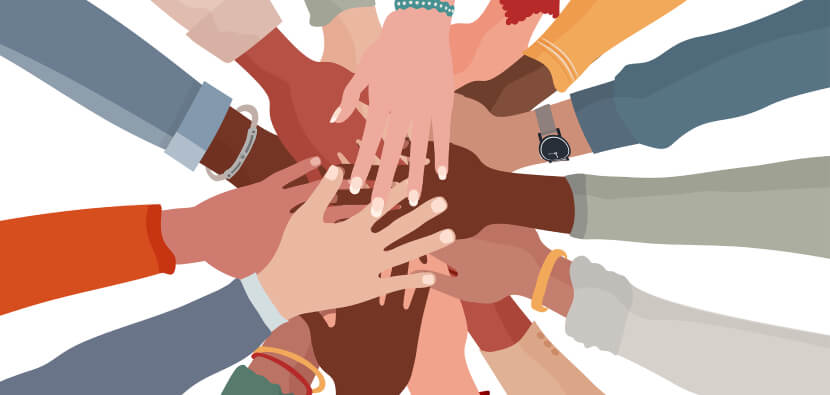In a truly democratic society, the public library system stands not just as a source of lifelong learning, but also as a bastion of egalitarianism, serving community members of all cultural backgrounds, gender identities and abilities.
As Matt Finch writes: "[L]ibraries are innately subversive institutions born of the radical notion that every single member of society deserves free, high quality access to knowledge and culture.”
In its Policy Manual, the American Library Association (ALA) takes a deeper dive into this idea:
ALA recognizes the critical need for access to library and information resources, services, and technologies by all people, especially those who may experience language or literacy-related barriers; economic distress; cultural or social isolation; physical or attitudinal barriers; racism; discrimination on the basis of appearance, ethnicity, immigrant status, religious background, sexual orientation, gender identity, gender expression; or barriers to equal education, employment, and housing.
Similarly, in its Statement on Libraries and Intellectual Freedom, the International Federation of Library Associations and Institutions (IFLA) affirms that "Libraries shall make materials, facilities and services equally accessible to all users. There shall be no discrimination due to race, creed, gender, age or for any other reason."
See also:
-
Library outreach: teaching media literacy to underserved communities
-
At a "human library" event, people's real-life stories are an open book
-
Unlocking potential: utilizing library space for community engagement and recreation
Celebrating diversity

One way that many public libraries provide an inclusive space is by celebrating diversity and promoting multiculturalism in their communities. Here are some suggestions for how to do this:
Diverse collections and resources
Build an inclusive collection that reflects the diversity of your local library patrons. Acquire materials, books and other materials that represent a broad range of cultures and perspectives. Offer digital resources in multiple languages to serve the needs of a linguistically diverse community.
PressReader is a great example; with publications from over 120 countries in more than 60 different languages, it allows users to read their favorite content from home and from around the world.
Cultural programs and storytelling
Host cultural workshops and programs that showcase the traditions, art, music and literature of various cultures. Invite local artists, authors and performers from different backgrounds.
Conduct storytelling sessions that include folktales, myths and stories from from all over the globe.
Author talks and "living library" events
Organize author talks and panel discussions featuring writers from diverse backgrounds. This can provide insights into different cultures and foster a sense of belonging and of understanding.
Tap into the knowledge and lived experience of other people by hosting a "living library" event, such as the type presented by the Human Library Organization. Talking to folks from various backgrounds is a great way to build bridges between communities, challenge ourselves and shatter stereotypes.
Diversity in hiring
The ALA's Policy Manual says:
In order to ensure that libraries are both reflective of and relevant to the communities they serve, the American Library Association encourages and supports recruitment and continuing education initiatives that facilitate the hiring and promotion of a diverse workforce in libraries of all types and at all organizational levels.
Staff members can also attend workshops or take online-learning courses to build their cultural competence, learn about inclusive practices and grow their library skills in general.
Cultural exhibits and film screenings
Create a more inclusive library space by hosting exhibits that showcase the history and contributions of different cultural groups within the community.
Organizing film screenings featuring movies from various cultures is another engaging way to promote cross-cultural understanding and community-building.
Community engagement
Actively engage with the community to understand its diverse needs and preferences. Seek feedback and involve the public in planning programs.
Partner with local community groups, cultural organizations and schools to organize joint events and programs that reflect and celebrate multiculturalism.
Reading clubs and interactive workshops
Start book clubs that focus on literature from different countries. This can encourage discussions and promote understanding among community members.
Host workshops on topics such as cultural sensitivity, diversity awareness and inclusivity to educate library patrons and the broader community.
Ensuring library spaces are open to all
A truly inclusive library space must be welcoming to all patrons, regardless of any physical challenges or learning disabilities. This begins with library buildings and extends to the resources and technologies available within them.
In a position paper titled "Guidelines on Library and Information Services for People with Disabilities", the Canadian Federation of Library Associations offers recommendations relating to accessibility, including the following:
Library by-laws or internal governing regulations should include a provision stating that access for people with disabilities is part of its institutional mandate.
The library’s service standards should affirm that staff treat people with disabilities with the consideration, dignity and respect to which all patrons are entitled.
Library staff should be familiar with the Principles of Universal Design published by the Center for Universal Design, North Carolina State University which will serve to make libraries more inclusive and accessible for all users. Libraries should have a staff member or a resource person in the community that has expertise on universal design.
Library staff should refer to documents published by the International Federation of Library Associations and Institutions (IFLA) relating to accessibility. Examples of IFLA sections to be familiar with: Libraries Serving Persons with Print Disabilities Section; Library Services to People with Special Needs Section.
The library should have an emergency and evacuation plan that takes into account the safe evacuation of people with disabilities.
The library should conduct evaluations of its services to ensure that they are equitable and inclusive to all members of the community. Evaluation methods could include: user and circulation figures and other statistics, focus groups with diverse representatives, interviews, surveys, program evaluations, user suggestions, complaints, and other forms of feedback.
Public library service that respects individual needs
The CFLA paper also notes that in order to successfully deliver services to members with disabilities, public libraries must understand community needs and be able to provide options. Enabling patrons to connect with public library service should be rooted in principles of inclusion and respect for the needs of the individual.
With those principles in mind, public libraries should prioritize providing the following types of service, among others:
alternative format collections
accessible websites, online catalogue, and electronic resources
accessible computing devices, assistive devices and software (e.g. screen readers and magnifiers)
loaning of equipment to access materials in alternative formats (e.g. DAISY players)
high speed wireless networks for downloading / streaming online material
remote library card registration
technology assistance through resources such as library staff, partner organizations, volunteers and peer-to-peer groups
staff assistance through such things as e-mail, chat, texting, telephone, fax, relay services, webinars, video tutorials
extension services for those unable to visit a library. Examples can include collection deposit services, mobile library services, and books-by-mail services
options for extended loan periods and no fines
An inclusive library experience
At PressReader, we also believe reading should be inclusive, and that anyone with a library card should be able to enjoy newspapers and magazines from all over the world. That’s why we created Accessibility Mode, for readers who rely on tools like assistive technology to explore content at public libraries.
With keyboard navigation, compatibility with screen readers, color contrast, large named buttons, and user font-size control, PressReader Accessibility Mode is fully compliant to meet Level AA of the W3C Web Content Accessibility Guidelines.
Cultural celebrations in the library space
To foster a greater sense of the library as a truly welcoming and inclusive space, librarians can program events and displays that tie into occasions celebrating and honoring people of all abilities and cultural backgrounds. Here are a few to get you started:
- Black History Month (February in the US and Canada; October in Ireland and the UK)
- International Women's Day (global; March 8)
- Chinese Language Day (global; April 20)
- Canadian Jewish Heritage Month (Canada, May)
- National Indigenous History Month (Canada; June)
- Disability Pride Month (US; July)
- NAIDOC Week (Australia; July 7 to 14)
- National Hispanic American Heritage Month (US; September 15 to October 15)
- International Day of Sign Languages (global; September 23)
- International Day of Persons With Disabilities (global, December 3)












